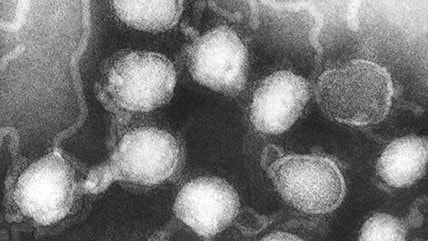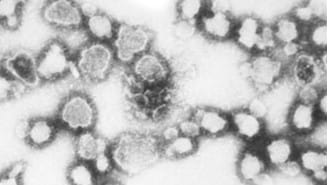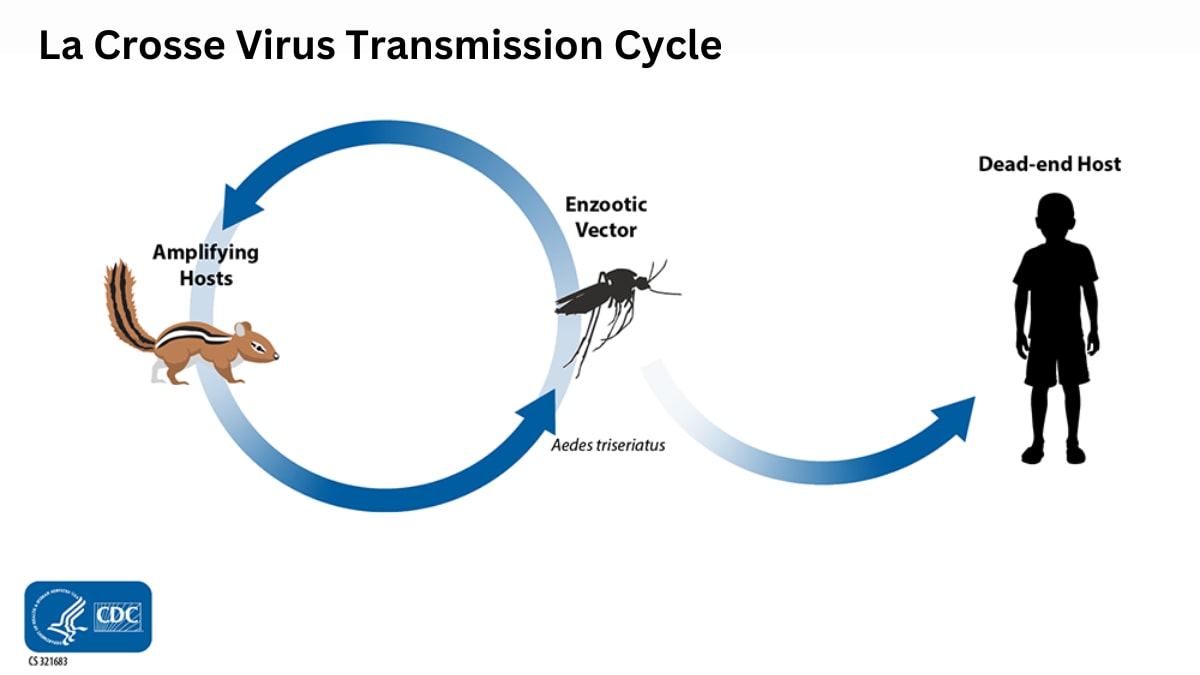Key points
- La Crosse (LAC) virus disease is caused by a virus in the California serogroup virus, genus Orthobunyavirus.
- LAC virus is maintained in the environment by Aedes triseriatus mosquitoes and small mammals, such as chipmunks and squirrels.
- Ae. triseriatus are found in deciduous forest habitats in eastern and north central United States.
- Infected humans are considered "dead-end" hosts (i.e., do not develop a high enough viremia to be able to infect mosquitoes).

Virus
LAC virus is a California serogroup virus, in the genus Orthobunyavirus, family Peribunyaviridae. Members of the family Peribunyaviridae have three segments of single-stranded RNA. The virus particles are spherical or oval, enveloped, and 90-100 nm in diameter.

Other California serogroup viruses found in the United States include California encephalitis virus, Jamestown Canyon virus, snowshoe hare virus, and trivitattus virus.
Transmission
LAC virus is spread to people by the bite of an infected mosquito. Mosquitoes become infected when they feed on small mammals, such as chipmunks and squirrels. The primary vector for LAC virus is Ae. triseriatus (the eastern treehole mosquito), found in deciduous forest habitats (i.e., forests with trees that lose their leaves each year). Humans do not develop high enough levels of the virus in their blood to infect mosquitoes. As a result, they are considered "dead-end" hosts for LAC virus.

Ae. triseriatus is an aggressive daytime-biting mosquito, especially in or near woods where they reside. Ae. triseriatus normally lays its eggs in standing water collected in tree holes, but it will also lay eggs in containers with standing water, particularly discarded tires. LAC virus is passed from the female mosquito to the eggs she lays. The virus can survive in dormant eggs through the winter and develop into infected, adult mosquitoes in the spring.
LAC virus is not spread by coughing, sneezing, touching, or other contact with someone who is infected.
